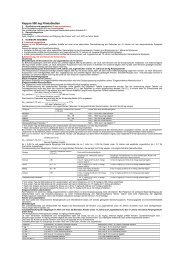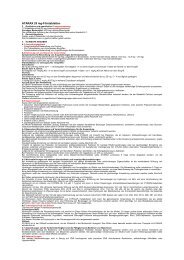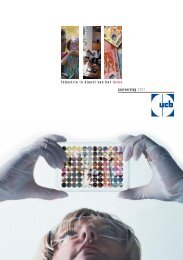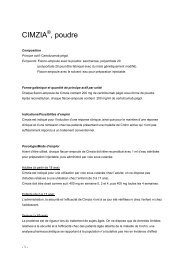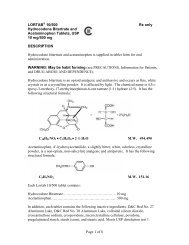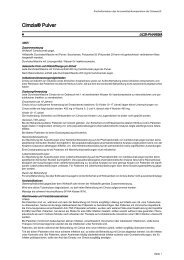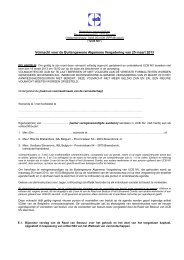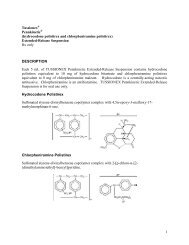UCB SA - BNP Paribas Fortis
UCB SA - BNP Paribas Fortis
UCB SA - BNP Paribas Fortis
Create successful ePaper yourself
Turn your PDF publications into a flip-book with our unique Google optimized e-Paper software.
(a) a strategic focus on severe CNS and immunology diseases;<br />
(b) a dual pipeline approach to research and development encompassing both new chemical entities<br />
and new biological entities;<br />
(c) a world-wide research and development staff consisting of approximately 1,400 employees;<br />
(d) two major research sites located at Braine-l’Alleud (Belgium) and Slough (United Kingdom);<br />
(e) five development teams located at Atlanta, Georgia (U<strong>SA</strong>), Braine-l’Alleud (Belgium), Monheim<br />
(Germany), Slough (United Kingdom) and Tokyo (Japan);<br />
(f) a focus on molecules in development for the treatment of epilepsy, respiratory diseases, Crohn’s<br />
disease, rheumatoid arthritis, bone loss diseases, systemic lupus erithymatosus, psoriasis and<br />
other severe diseases; and<br />
(g) <strong>UCB</strong> NewMedicines leading partnerships with academia and other leading drug discovery<br />
organizations as well as a continuing search for further partnerships through which the <strong>UCB</strong><br />
Group can utilise its expertise, particularly in antibody-based drug research and development, to<br />
optimise the development and marketing of new pharmaceuticals.<br />
(b) Discovery Technologies<br />
As a result of its dual-pipeline strategy encompassing both new chemical entities and new biological<br />
entities, the <strong>UCB</strong> Group is able to address disease pathways at different points in the targeted therapy<br />
areas.<br />
New chemical entities (“NCEs”) are used to treat a wide range of diseases. Such drugs usually have a<br />
molecular weight of less than 500 daltons and are most often designed to be taken orally. NCEs are<br />
less expensive to manufacture than extracellular large molecules, and are designed to address both<br />
extracellular and intracellular targets.<br />
New biological entities (“NBEs”), in particular antibody-based drugs are relatively large (molecular<br />
weight generally greater than 50,000 daltons), tend to be highly specific and are often the only way to<br />
block large protein-protein interactions. NBEs are generally administered by injection and can act very<br />
rapidly and over a long period of time.<br />
They are not easily applied to intracellular targets, but can be used to selectively modulate such events<br />
as cytokine-receptor interactions or adhesion molecule binding. The <strong>UCB</strong> Group possesses a range of<br />
cutting-edge technologies that facilitate the discovery and development of NCE and NBE.<br />
NCE Technologies<br />
The discovery of the synaptic vesicle protein SV2A, the binding site of Keppra, and the continuance of<br />
clinical trials for further SV2A ligands, including brivaracetam, illustrate the capability and skills of the<br />
<strong>UCB</strong> Group in advancing small molecule drug discovery to produce potential new, highly potent antiepileptic<br />
drugs. The NCE discovery technologies of the <strong>UCB</strong> Group include, for example, computer<br />
A11250830/2.25/23 Oct 2009 67



